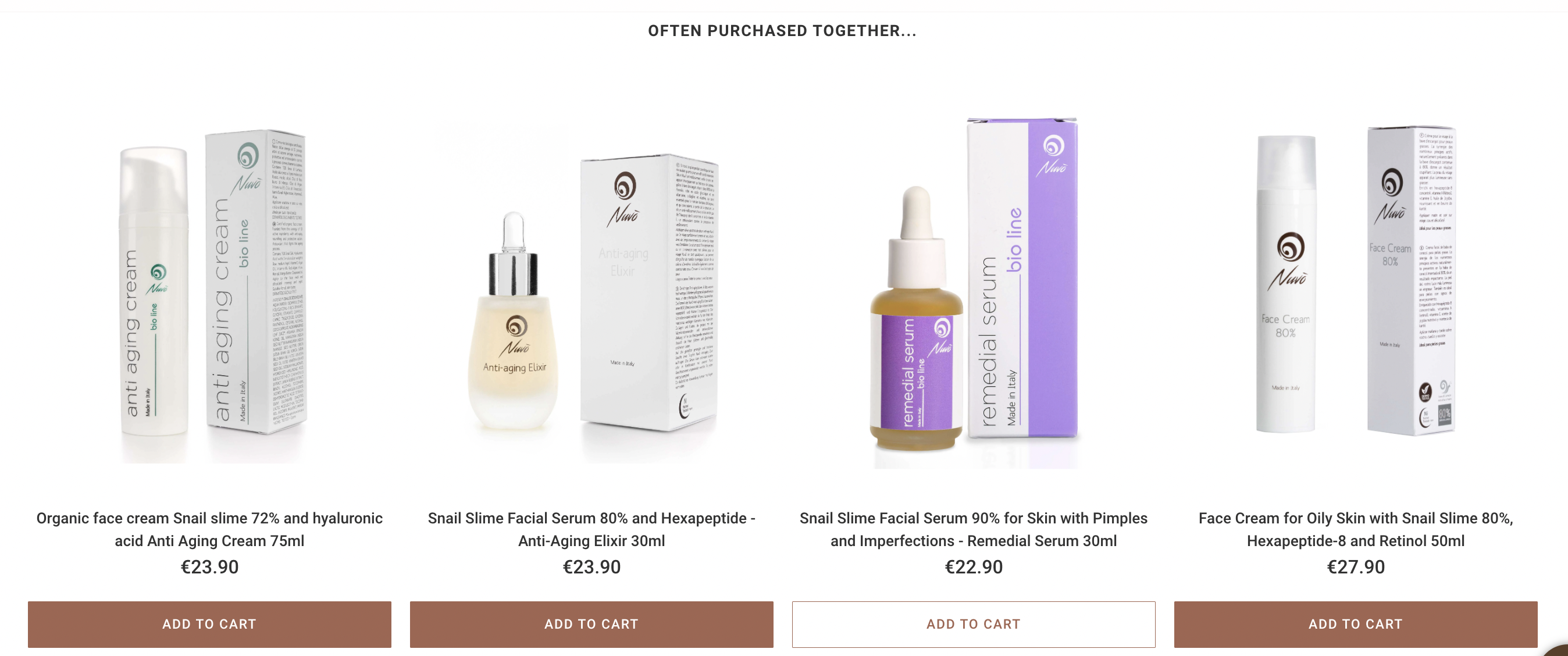We’ve all experienced different types of product recommendations while online shopping. Let’s take a closer look at these strategies and learn where and when to use them.
A. Upselling Recommendations
Ever been on the verge of buying a product when you see a version that’s a bit pricier but has better features? That’s upselling for you. The perfect spots to place these recommendations are on the product page itself or during the checkout process. It’s like saying, “Hey, you’re about to buy this, but here’s a version that could serve you even better!” A prime example is Apple. When you’re about to grab an iPhone, they gently nudge you towards higher-end models, successfully increasing their average order value.

B. Cross-Selling Recommendations
This is when you’re about to buy something, and the site suggests another product that goes well with it. You’ll most likely see these recommendations on the product page or at checkout. Picture this: you’re shopping in Zara, and you’ve just chosen a dress. Now they’re suggesting shoes and a bag that pairs beautifully with it. Before you know it, you’ve got a whole outfit in your cart. This is a smart move that helps Zara significantly boost its revenue.
C. Personalized Recommendations
Personalized recommendations can pop up anywhere – the homepage, product pages, or even in your inbox if you’ve subscribed to the brand’s newsletter. It’s all about tailoring recommendations to what you as a customer might like, based on their past interactions with the site. Spotify nails this by creating personalized playlists for users based on their listening history. By introducing users to new songs they’re likely to enjoy, Spotify keeps its users hooked.

D. Recommendations Based on Browsing History
Ever felt like a website remembers you? That’s because it does! Recommendations based on browsing history are a powerful tool to remind you of products you’ve shown interest in during previous visits. ASOS, for example, will remind you of those sneakers you checked out but didn’t buy. It’s like a friendly nudge saying, “Hey, remember these? They’re still here, and they’re just as cool as you remember!”
E. Recommendations Based on Cart Items
We’ve all been there. You’ve added something to your cart, and suddenly you’re seeing recommendations for items that would go perfectly with it. That’s another strategy called recommendations based on cart items. It’s perfect for the cart page or the checkout process. IKEA uses this strategy to suggest items that complement what you’ve already chosen. Added a desk to your cart? How about a chair to go with it? It’s an effective way to encourage customers to complete a set.
F. Recommendations Based on Popularity or Trends
Lastly, let’s talk about recommendations based on popularity or trends. These can be found on homepages or category pages, showing you what’s currently hot or what others are buying. Sephora often highlights ‘Best Sellers’ or ‘Trending Now’ sections, giving customers a feel for what’s popular. It’s a great strategy for increasing product discovery and sales.
Track the Success of Your Product Recommendations
It’s one thing to implement these strategies, but how do you know if they’re working? Well, that’s where Key Performance Indicators (KPIs) come in. These are the metrics that will help you understand if your recommendations are really hitting the mark.
Conversion Rate
Conversion Rate tells you if people are actually buying what you’re recommending. If it’s not as high as you’d hoped, play around with your algorithms. Maybe try putting recommendations in a different spot or on a different page.
Average Order Value (AOV)
If your upselling or cross-selling game is on point, you should see this number go up. If not, mix things up! Try different product pairings or showing campaigns to different segments.
Click-Through Rate (CTR)
The click-through rate shows you how many people clicked on a recommendation. If it’s low, your recommendations might not be hitting the mark. Dive into your customer data and see if you can uncover new insights to make your recommendations more appealing. Customer data can hint at customer preferences, most visited pages, and which campaigns are working and which aren’t.
Finally..
We’ve journeyed through the world of product recommendations together. We’ve peeked into the successes of some cool brands, dived deep into how to make recommendations work, and even talked about measuring their impact.
But here’s the thing – the world of e-commerce is always changing. So, keep exploring, innovating, and experimenting with different types of recommendations. Keep your customers at the heart of it all, because when they’re happy, your business is happy.









